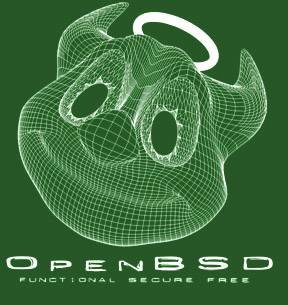
man 4 wd, driver compatible with standardsMFM,RLL,ESDI,IDE, andEIDEdrives, as well asSerial ATAdrives, andPCMCIA/CFstorage media.man 4 sd, driver compatible with standardsSCSIthat includes USB disks, SATA disks attached to an ahci(4) interface, and disk arrays attached to a RAID controller. Devices are number on boot stage in the sequence that they are found, from0tox.
Partitions means two different thinks in OpenBSD:
- filesystem partitions created and managed by
disklabel. We can find more information about it atman 8 disklabel. MBR,GPT, that can be named also like BIOS partitions, because they are created using theBIOS controller, that are managed byfdisk. We can find more information about atman 8 fdisk.

$ dmesg | tail -n 5
umass0 at uhub0 port 1 configuration 1 interface 0 "SanDisk Cruzer Blade" rev 2.00/2.01 addr 5
umass0: using SCSI over Bulk-Only
scsibus4 at umass0: 2 targets, initiator 0
sd2 at scsibus4 targ 1 lun 0: <SanDisk, Cruzer Blade, 2.01> SCSI4 0/direct fixed serial.888888888888888888
sd2: 3819MB, 512 bytes/sector, 7821312 sectorsWe can see that the device sd2 is initialized and it is a 4GB USB stick. Do directly write our boot FAT-16disk image that we previously created we don't have to take care about any partition of any kind, the virtual disk image have his personal MBRand filesystem. So we directly write to the disk with the ddutility, we can find more information about it at man 1 dd.
$ doas disklabel sd2
# /dev/rsd2c:
type: SCSI
disk: SCSI disk
label: Cruzer Blade
duid: 0000000000000000
flags:
bytes/sector: 512
sectors/track: 63
tracks/cylinder: 255
sectors/cylinder: 16065
cylinders: 486
total sectors: 7821312
boundstart: 0
boundend: 7821312
drivedata: 0
16 partitions:
# size offset fstype [fsize bsize cpg]
c: 7821312 0 unused
i: 7821312 0 MSDOS The c partition simply identify the entire disk, so:
$ doas dd if=~/freedos/freedos.img of=/dev/sd2c bs=4M
$ doas sync
$ doas syncNow simply reboot the personal computer, select from BIOSthe USB stick to boot and enjoy FreeDOS.

1.2. Simply add to the packages like this:
$ doas pkg_add -U qemu
And here you are the video:
As usual have a good night, thank you for spend you time reading me. Nice regards,
Riccardo Giuntoli